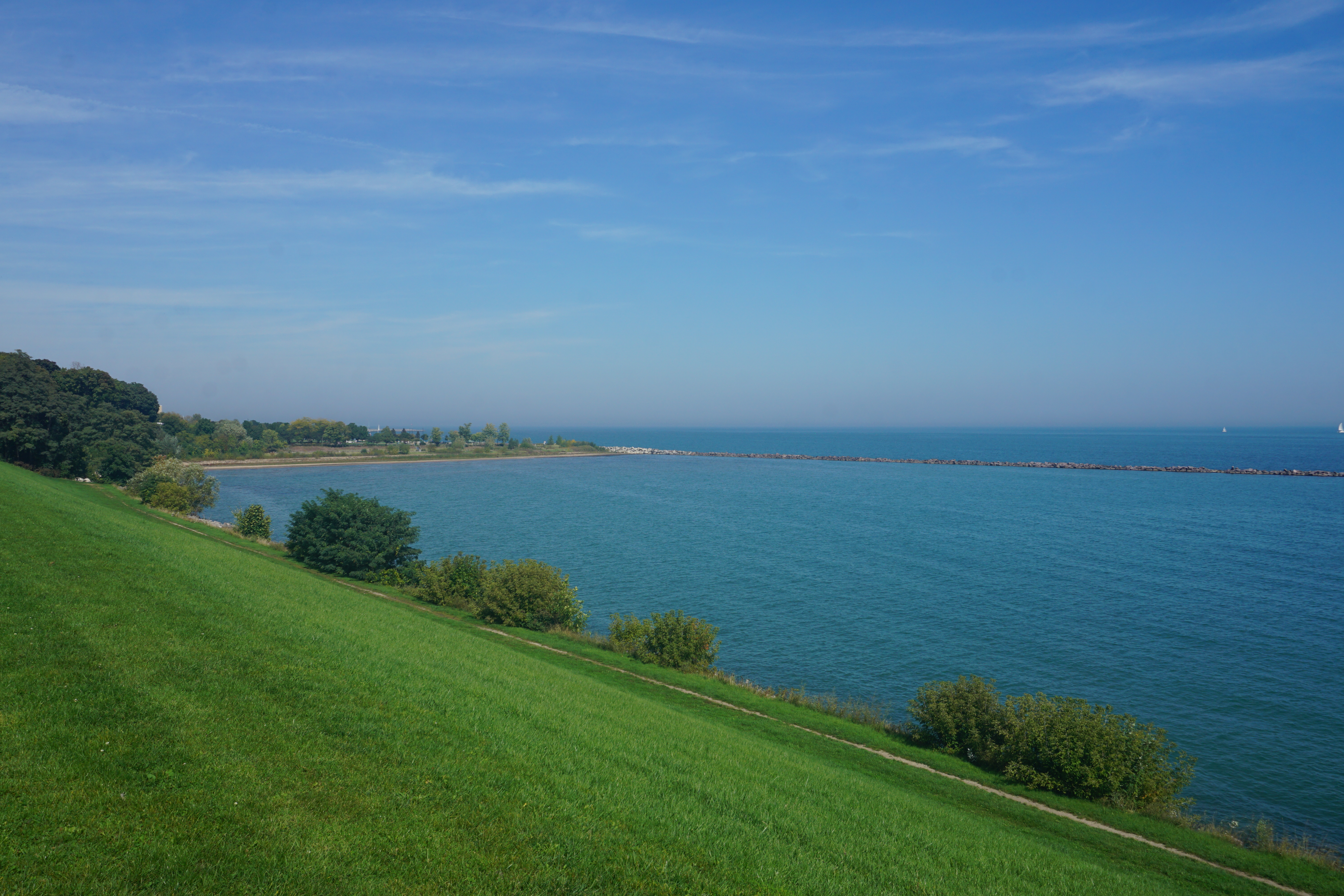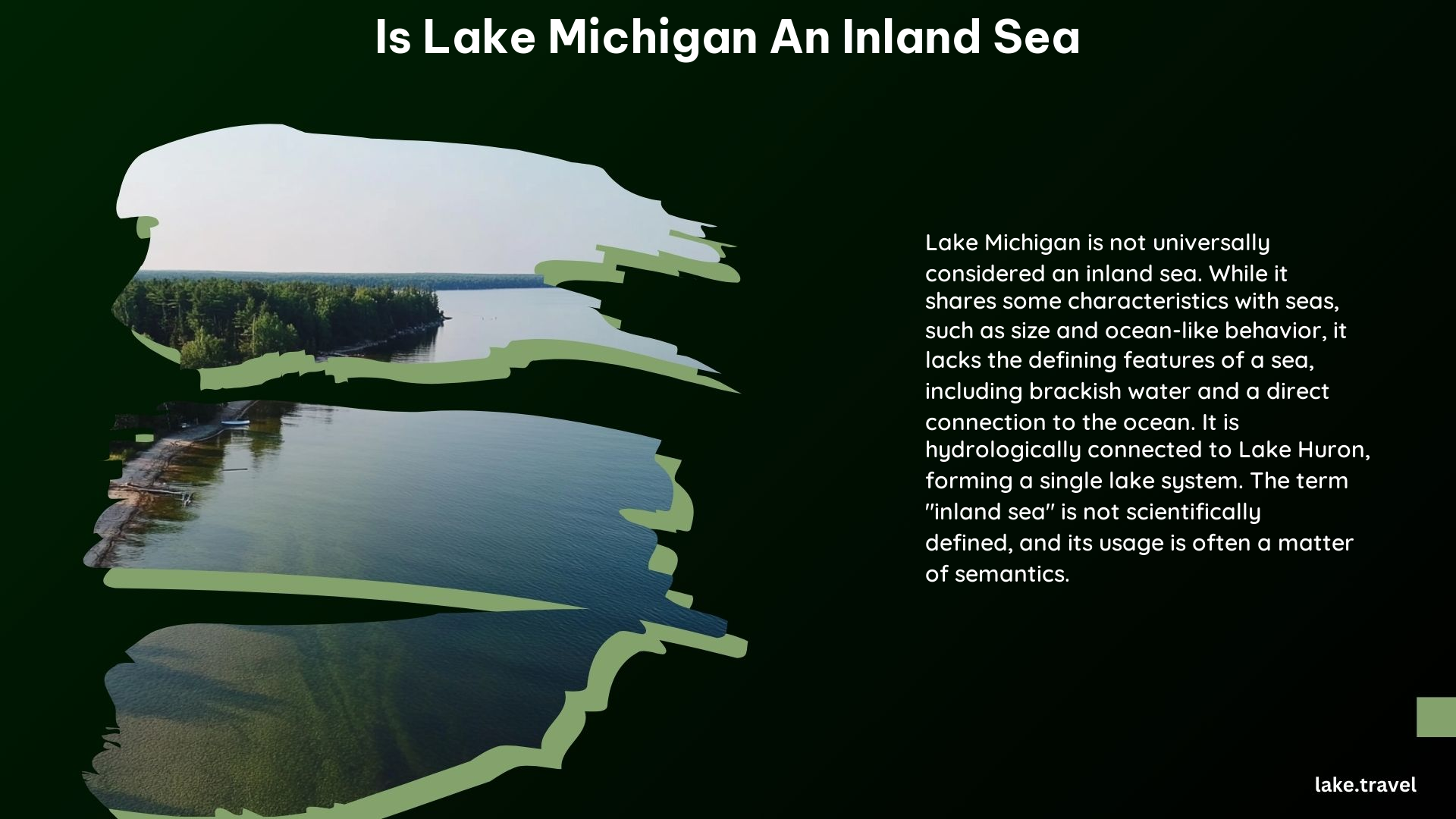Lake Michigan, one of the Great Lakes, is often debated as to whether it should be classified as an inland sea. The term “inland sea” is not a well-defined scientific term, leading to varying opinions among scientists and experts.
Scientific Criteria for Classifying Lake Michigan as an Inland Sea

Size and Characteristics
Lake Michigan is the second-largest of the Great Lakes by volume and the largest lake entirely within one country. Its size and characteristics, such as its depth and surface area, are comparable to those of seas. However, its freshwater nature and landlocked status distinguish it from traditional seas.
Ocean-like Features
Lake Michigan exhibits some ocean-like features, such as strong currents, waves, and storm surges, which are similar to those found in seas. This has led some scientists to study the lake using oceanographic models and equipment.
Influence of Land Surface Processes
Despite its size, Lake Michigan is heavily influenced by the land surrounding it, which affects its water levels, chemical composition, and other characteristics. This is a key difference from larger seas, which are less dependent on land processes.
Debate Among Scientists

Teso Coker
A water resource scientist who considers Lake Michigan an inland sea due to its size and characteristics.
Lauren Fry
A principal investigator at NOAA’s Great Lakes Environmental Research Laboratory who does not scientifically classify the Great Lakes as inland seas due to their dependence on land processes.
Unique Specifications of Lake Michigan
Freshwater Nature
Lake Michigan is a freshwater lake, unlike traditional seas, which are saltwater bodies.
Landlocked Status
Lake Michigan is a landlocked body of water, surrounded by land on all sides, unlike seas, which are connected to the ocean.
Dependence on Land Processes
As mentioned earlier, Lake Michigan is heavily influenced by the land surrounding it, which sets it apart from larger seas that are less dependent on land processes.
Comparison to Other Great Lakes
| Lake | Surface Area (sq mi) | Depth (ft) |
|---|---|---|
| Lake Superior | 31,700 | 1,332 |
| Lake Huron | 23,000 | 750 |
| Lake Erie | 9,910 | 210 |
| Lake Ontario | 7,340 | 802 |
| Lake Michigan | 22,300 | 925 |
As shown in the table, Lake Michigan is the second-largest Great Lake by surface area and has a significant depth, comparable to other Great Lakes that are sometimes considered inland seas.
Conclusion
While Lake Michigan shares some characteristics with seas, its freshwater nature and landlocked status make it distinct from traditional seas. The scientific community remains divided on whether to classify it as an inland sea, with some emphasizing its size and ocean-like features and others highlighting its dependence on land processes. Ultimately, the term “inland sea” remains a matter of semantics and interpretation.
